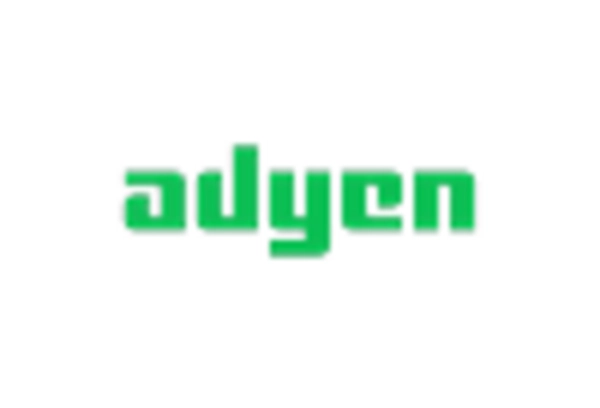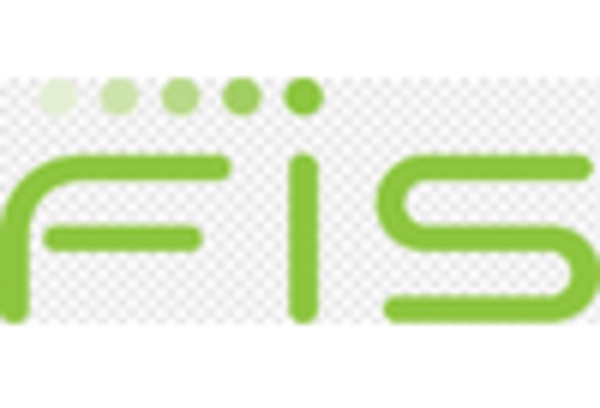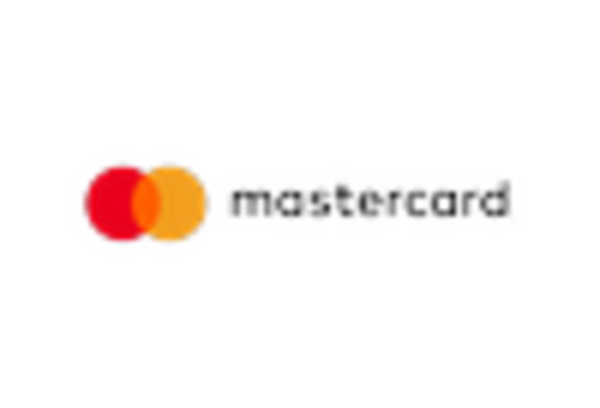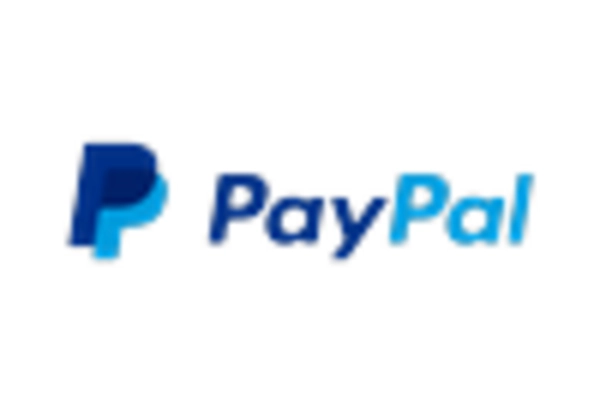Growing E-commerce Adoption
The rapid growth of e-commerce in Canada is a pivotal driver for the payment security market. With online retail sales projected to reach $50 billion by 2026, businesses are compelled to implement secure payment systems to protect consumer data. The convenience of online shopping has led to a surge in digital transactions, which, in turn, raises the stakes for security. Consumers are becoming more aware of security issues, leading to a demand for secure payment options. This trend is likely to drive innovations in payment security technologies, as companies strive to build trust with their customers. The payment security market is thus expected to expand, with a focus on solutions that enhance transaction security and customer confidence.
Regulatory Landscape Evolution
The evolving regulatory landscape in Canada significantly impacts the payment security market. Recent regulations, such as the Personal Information Protection and Electronic Documents Act (PIPEDA), mandate stringent data protection measures for businesses handling personal information. Compliance with these regulations is not optional; failure to adhere can result in hefty fines and reputational damage. As organizations navigate this complex regulatory environment, they are increasingly investing in payment security solutions to ensure compliance and protect consumer data. This trend is likely to drive market growth, as companies seek to implement systems that not only meet regulatory requirements but also enhance overall security. The payment security market is thus positioned for expansion as businesses prioritize compliance and risk management.
Increasing Cybersecurity Threats
The payment security market in Canada is experiencing heightened demand due to the increasing frequency and sophistication of cyber threats. In recent years, data breaches and cyberattacks have surged, prompting businesses to invest in robust security measures. According to the Canadian Centre for Cyber Security, the number of reported incidents has risen by over 30% in the last year alone. This alarming trend compels organizations to prioritize payment security solutions to safeguard sensitive financial information. As a result, the payment security market is projected to grow significantly, with an estimated CAGR of 12% over the next five years. Companies are increasingly adopting advanced technologies to mitigate risks, indicating a strong focus on enhancing their cybersecurity posture.
Consumer Awareness and Demand for Security
Consumer awareness regarding payment security is at an all-time high in Canada, significantly influencing the payment security market. As individuals become more informed about the risks associated with online transactions, they are increasingly demanding secure payment options. Surveys indicate that over 70% of consumers prioritize security features when choosing payment methods. This shift in consumer behavior is prompting businesses to enhance their payment security measures to meet these expectations. Companies that fail to address consumer concerns may face a decline in customer trust and loyalty. Consequently, the payment security market is likely to experience growth as organizations invest in solutions that align with consumer demands for security and privacy.
Technological Advancements in Payment Systems
Technological advancements are reshaping the payment security market in Canada. Innovations such as contactless payments, mobile wallets, and blockchain technology are transforming how transactions are conducted. These advancements necessitate enhanced security measures to protect against fraud and data breaches. For instance, the adoption of blockchain technology is expected to increase transaction transparency and security, potentially reducing fraud rates. As businesses integrate these technologies, the demand for sophisticated payment security solutions is likely to rise. The payment security market is thus poised for growth, driven by the need for solutions that can keep pace with rapid technological changes and evolving consumer expectations.

















Leave a Comment